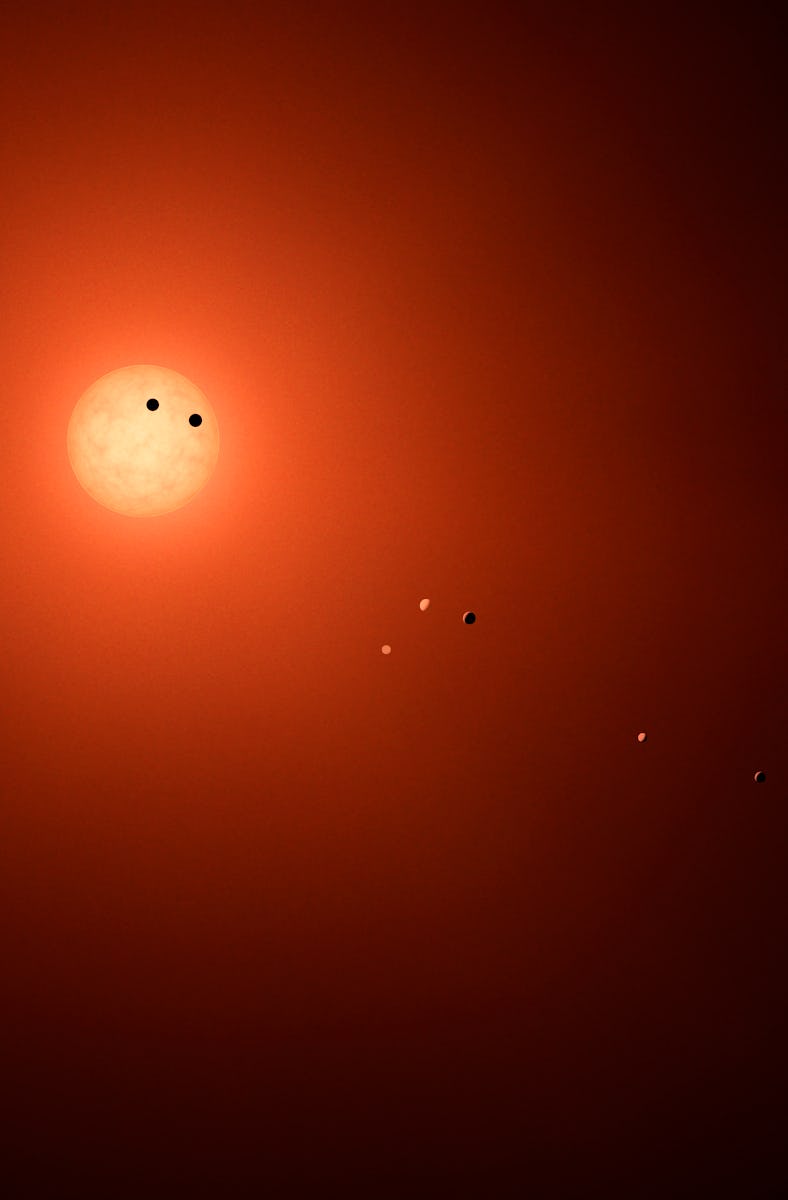What’s Going On With TRAPPIST-1b? It’s Complicated
Newly published data reveals that separating rays from rock is tough even for the JWST.

TRAPPIST-1 just reminded us, again, that space is unforgiving.
Last year, a team of astronomers used JWST to measure the starlight shining around the edges of TRAPPIST-1b as the rocky little planet passed in front of its host star. Astronomers call this a transit, and the idea is to measure the spectrum of the starlight filtering through the planet’s atmosphere (if it has one – the jury’s still out on that for TRAPPIST-1b) and learn something about its chemical makeup.
But thanks to the red dwarf star at the center of the system, it was hard for Lim and her colleagues to be sure whether they were seeing the chemical fingerprint of an alien atmosphere or stray signals from a temperamental star. In a recent paper, published in The Astrophysical Journal Letters, University of Montreal planetary scientist Olivia Lim and her colleagues explain why measuring the atmospheres of rocky planets around distant stars may be harder than it looks – and why astronomers need to be prepared for the challenge.
TRAPPIST-1b is too close to its star to be habitable, but it’s the easiest world in the TRAPPIST-1 system to observe with JWST.
Starlight, Too Bright
TRAPPIST-1 is a small, dim, cool star – it’s less than 0.05% as bright as our Sun, and only about 9% as massive. That’s part of what makes its brood of seven rocky exoplanets such good targets for astronomers; it’s easier to spot the planets silhouetted against the relatively dim star than against a big, brighter one like our Sun. Unfortunately, the small star’s light interfered in a big way when astronomers recently tried to measure the transit spectrum of the innermost planet, TRAPPIST-1b.
The new measurements, gathered with the NIRISS (Near InfraRed Slitless Spectrograph) instrument in 2022 are the first time JWST has been used to try and measure the spectrum of starlight filtering through the atmosphere of a rocky world like our own. When they started analyzing their data, Lim and her colleagues quickly realized that the spectrum of light from the planet had been “contaminated” by light from the star. Red dwarfs are active, temperamental stars, and things like sunspots and faculae (bright “hotspots” on the star’s surface – basically the opposite of sunspots) created “ghost signals” that mimicked the way certain molecules might look in a planet’s atmosphere.
And then there were the stellar flares, which red dwarf stars like TRAPPIST-1 are especially prone to. Lim and her colleagues spotted at least one stellar flare in their data.
“This flare affected our measurement of the amount of light blocked by the planet,” she says in a recent statement. “Such signatures of stellar activity are difficult to model, but we need to account for them to ensure that we interpret the data correctly.
Lim and her colleagues say the solution is to better understand the foibles of stars like TRAPPIST-1: starspots, hotspots, flares, and all. That’s going to require more computer simulations of the stars’ inner workings, as well as more detailed observations with telescopes like JWST. Armed with that information, astronomers stand a better chance of disentangling stellar antics from actual measurements of distant planets’ atmospheres.
“This need is all the more justified as stellar contamination can affect the search for atmospheres around the outer, cooler TRAPPIST-1 planets,” Lim and her colleagues write in their recent paper. And since those outer, cooler TRAPPIST-1 planets include the system’s three potentially-habitable worlds, it’s a pressing concern.
The Ongoing Mysteries Of TRAPPIST-1
Meanwhile, Lim and her colleagues say their observations made it very clear that TRAPPIST-1b doesn’t have a thick, cloudless blanket of hydrogen for an atmosphere. That agrees with what other astronomers, using a different method, concluded a few months ago. Neither team, however, can rule out a thinner atmosphere made of something like water, carbon dioxide, or even methane.
In fact, the jury’s still out on whether any of the TRAPPIST-1 worlds, including the ones in the star’s habitable zone, a little farther away than TRAPPIST-1b, actually have atmospheres.